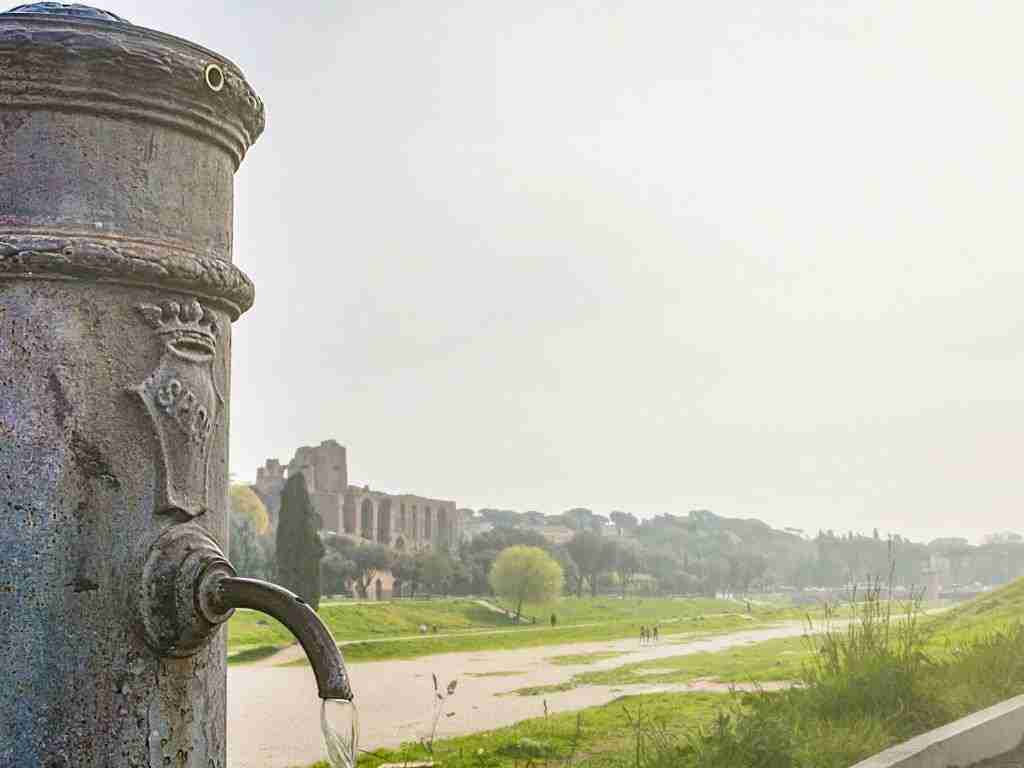Drinking Water in Italy

Can you drink water from the tap in Italy? The short answer is: yes, absolutely! Italy has some of the best tap water in the world.
But there’s a lot more to know about drinking water in Italy, from using drinking fountains to ordering water at a restaurant. Here are a few helpful tips to know before you go.
Still or Sparkling?

Even though Italy has great drinking water coming straight out of the tap, many Italians prefer to drink bottled water, particularly at restaurants. Part of that has to do with the fact that Italy has many name-brand mineral waters that are considered healthier because of their mineral content. Drinking bottled water has also become a matter of habit and convenience.
So when you are at a restaurant and you ask for water, 9.9 times out of 10, the water will come in a bottle. The waiter will usually ask whether you want your water still (liscia or naturale) or sparkling (gassata or frizzante). If you want tap water, you should ask specifically for tap water (acqua di rubinetto).
If you are buying water in a supermarket or convenience store, you will come across several other water choices.
Here are a few terms you need to know when buying water in Italy:
- liscia or naturale – still water
- frizzante or gassata – sparkling water
- acqua effervescente – effervescent water, sort of halfway between still and sparkling. This is sometimes labeled “leggermente frizzante,” or lightly sparkling water.
I personally love Italian sparkling water (acqua frizzante). Italians swear by its digestive properties. And, in my opinion, it goes down better than seltzer or club soda.
Public Water Fountains

Another thing you will encounter in Italy are public water fountains. Some are just metal or marble spouts coming out of a wall, while others may be more modern contraptions.
Public water fountains in Italy should be clearly marked with a sign that says “acqua potabile.” If water is considered unsafe to drink, it will be labeled “acqua non potabile.”
Rome, in particular, is blessed with many water fountains. These fountains, affectionately called nasoni (big noses) because the shape of the spout resembles a slender, curving nose, have been in the capital since the late 19th century. Another name for a nasone (singular) is fontanella.
There are about 250 nasoni in the touristic center of Rome, about one-tenth of the total number city-wide. They provide fresh, free, continuously-running drinking water.
Tip: When in Rome, carry around a reusable water bottle so that you can refill it in a nasone. It’s convenient and environmentally-friendly.
Italian Mineral Waters and Their Sources
Italy drinks more water than nearly any other country and has more than 250 name-brand mineral waters.
Italian mineral waters are treated a lot like their wines. There are strict standards for them to be able to call themselves “mineral water.” And, like wine, they are usually sold and served not far from where they were bottled. Think terroir, but for water.
Many Italian mineral waters are name brands. For example, Acqua San Gemini from the town of San Gemini, Umbria, is most popular near its source in central Italy. Neapolitans may reach for Ferrarelle or Lete, two brands that originated from springs in Campania. Levissima, bottled in the Valtellina, is the most popular mineral water in northern Italy. While Sardinia’s Smeraldina water, extracted from the Monti di Deu (the Mountain of God) in Gallura, was recently voted the best water in the world.
Then there are other mineral water brands you may have heard of. San Pellegrino, which is bottled near Bergamo (Lombardy), is Italy’s most famous bottled water. San Benedetto, originally from Scorzè, near Venice, is available in still and sparkling varieties in restaurants, delis, and grocery stores throughout Italy. Acqua Panna, which comes from the Apennine mountains of Tuscany, is popular with Florentines and high-end restaurants.
My favorite? I prefer San Benedetto’s acqua frizzante.
Environmental Impact
Of course, all of this consumption of bottled water can have a negative impact on the environment. Though many bottled waters are sold in recycling-friendly glass, lots of them are bottled in plastic. On top of this is the issue of transporting all of these heavy pallets of water from source to store.
World Water Day (La Giornata Mondiale dell’Acqua), held each year in March, seeks to draw attention to the problems of bottled water and to direct more people to drink tap water. So you may start to see “acqua di rubinetto” become more common in restaurants as more people in Italy embrace this eco-friendly approach to drinking water.

